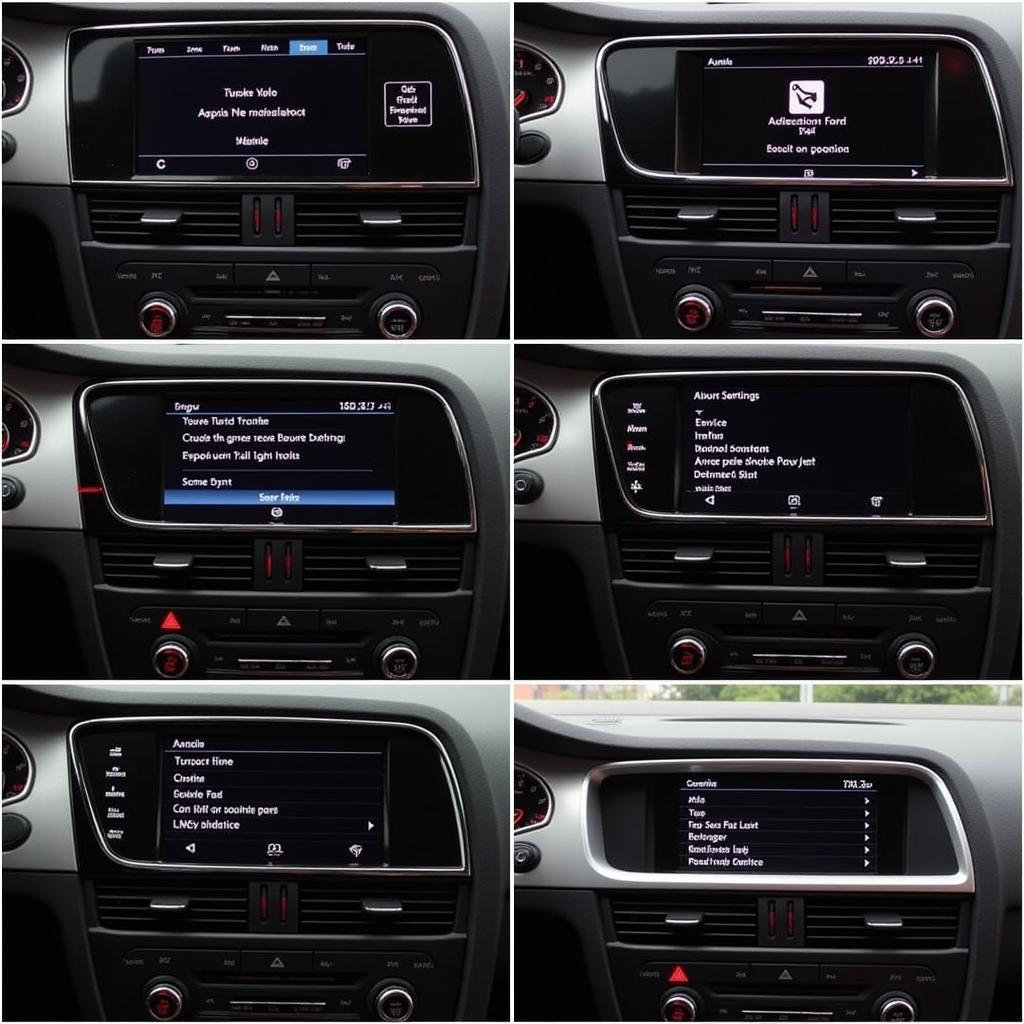The dreaded brake warning light. It’s staring you in the face in your 2002 Subaru Outback, and it just won’t go away. A persistent brake warning light is a common issue for Outback owners, but it doesn’t have to be a mystery. This comprehensive guide dives into the reasons why your 2002 Outback brake warning light stays on and provides practical solutions to get you back on the road safely.
Understanding Your 2002 Outback’s Brake System
Before we troubleshoot, let’s quickly review the essential components of your Outback’s braking system. This understanding is crucial for accurate diagnosis. The system includes the master cylinder, brake lines, brake calipers (or wheel cylinders at the rear), brake pads/shoes, and of course, the brake fluid. The brake warning light is designed to alert you to potential problems within this system.
Common Causes of a Persistent Brake Warning Light in a 2002 Outback
Several factors can cause your 2002 Outback brake warning light to stay illuminated. These range from simple fixes to more complex issues requiring professional attention.
-
Low Brake Fluid: This is the most common culprit. Check your brake fluid reservoir. If the level is low, top it off with the correct DOT 3 or DOT 4 brake fluid specified in your owner’s manual.
-
Worn Brake Pads: Brake pads have wear indicators that trigger the warning light when they get too thin. Inspect your brake pads for excessive wear.
-
Faulty Brake Light Switch: This switch, located near the brake pedal, can malfunction, causing the light to stay on even when the brakes aren’t engaged.
-
ABS Issues: If your Outback is equipped with Anti-lock Braking System (ABS), a problem with the ABS module or sensors can trigger the warning light.
-
Parking Brake Engaged: Sometimes, the simplest explanation is the right one. Ensure your parking brake is fully released.
Diagnosing the Problem: A Step-by-Step Guide
- Check the parking brake: Make sure it’s completely disengaged.
- Inspect brake fluid level: If low, add the appropriate brake fluid. If it continues to drop, you likely have a leak.
- Check brake pads: Look for wear indicators. If worn, replace the pads.
- Test the brake light switch: Try jiggling the brake pedal. If the light flickers, the switch may be faulty.
When to Seek Professional Help
If you’ve checked the basics and the brake warning light persists, it’s time to consult a qualified mechanic. Issues with the ABS system, master cylinder, or brake lines require specialized tools and expertise.
“Ignoring a persistent brake warning light can lead to serious safety risks,” warns John Smith, ASE Certified Master Technician. “It’s always better to err on the side of caution and have a professional diagnose the problem.”
Preventing Future Brake Issues in your 2002 Outback
Regular maintenance is key to preventing brake problems. Schedule brake inspections every 12,000 miles or as recommended in your owner’s manual. This includes checking brake fluid, pads, and rotors.
Conclusion: Keeping Your 2002 Outback Safe and Reliable
Addressing a persistent brake warning light in your 2002 Outback is vital for your safety. By understanding the common causes and following the diagnostic steps outlined in this guide, you can identify the issue and take appropriate action. Remember, when in doubt, seek professional help. Don’t let a glowing brake warning light keep you off the road.
“Preventative maintenance is the best way to avoid costly repairs down the line,” adds John Smith. “Regular brake inspections are a small investment that can save you a lot of trouble in the long run.”
FAQ
- Can I drive my 2002 Outback with the brake warning light on? While you might be able to drive, it’s not recommended. The light indicates a potential problem that could compromise your braking ability.
- How often should I check my brake fluid? Check your brake fluid level at least once a month.
- How much does it cost to replace brake pads on a 2002 Outback? The cost varies depending on the type of brake pads and labor rates in your area.
- How can I tell if my brake light switch is faulty? A flickering brake light when jiggling the pedal is a common indicator of a faulty switch.
- What is the difference between DOT 3 and DOT 4 brake fluid? DOT 4 brake fluid has a higher boiling point than DOT 3.
- Do I need to bleed my brakes after adding brake fluid? You typically don’t need to bleed your brakes after simply topping off the fluid. However, bleeding is necessary if you’ve opened the brake lines for repairs.
- What are the symptoms of a bad ABS module? Symptoms include an illuminated ABS warning light, erratic braking behavior, and a soft brake pedal.

